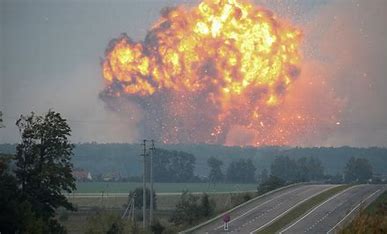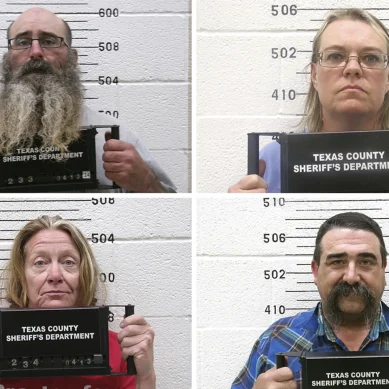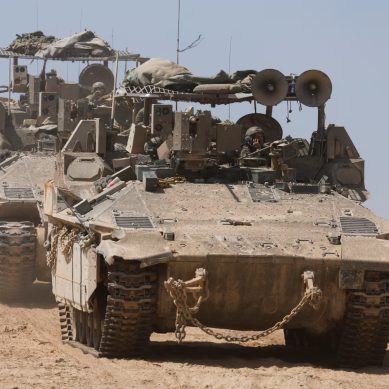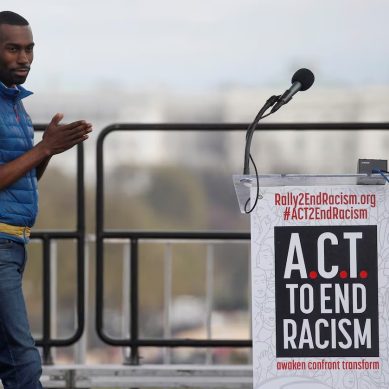
In my youth, atomic war was, culturally speaking, all around us. It was even in outer space, as in the 1955 film This Island Earth in which another planet goes up in a version of radioactive flames, scaring the living hell out of the 11-year-old Thomas M. Engelhardt.
So, yes, my classmates were messing around and having fun, but underneath it all lurked a sensibility (probably only half-grasped at the time) about the world we were to graduate into that was anything but upbeat. The planet that our leaders were then assuring us was ours for the taking seemed to us anything but.
It’s true that, in the years between then and now, the world didn’t go up in a mushroom cloud (with an accompanying nuclear winter killing billions more of us, a probability we knew nothing about in 1962). Still, whether you’re talking about actual war or potential nuclear catastrophe, it’s certainly looking mighty ugly right now.
Worse yet, if you’re 18 as I was then (and not 78, as I am now), you undoubtedly know that the future isn’t looking cheery these days either, even without a nuclear war. Sadly, in the years since I graduated high school, we discovered that humanity had managed to come up with a second slower but potentially no less devastating way to make this world unliveable. I’m thinking, of course, of climate change, a subject deeply on the minds of the young on this embattled planet of ours.
I mean, from unparalleled floods to unprecedented melting ice, staggering megadroughts to record wildfires, sweltering heat waves and ever fiercer storms to… well, increasingly extreme weather of almost any imaginable sort, this planet is an ever less comfortable place on which to live, even without a mushroom cloud on the horizon. And that’s especially true, given how humanity is dealing with the crisis to come.
After all, what makes more sense right now than a never-ending war in Europe to create an energy crisis (though that crisis is also helping fuel the rapid growth of alternative energy)? What makes more sense than an escalating arms race globally or the world’s two greatest greenhouse gas producers, the United States and China, facing off against each other in an increasingly militarised fashion rather than cooperating to stop our planet from burning up?
What makes more sense than the Biden administration giving the nod to an oil drilling project on federal land in Alaska expected to produce an estimated 576 million barrels of oil over the next 30 years, despite the president’s previous promise not to do such a thing? (“No more drilling on federal lands, period. Period, period, period.”) What makes more sense than China using more coal, that monstrous greenhouse-gas producer, than the rest of the world combined?
What makes more sense than the major oil companies garnering greater profits in 2022 than in any previous moment in history as they broil the planet without mercy? What makes more sense than, as the Guardian reported, more than 1,000 “super-emitter” sites, mostly at oil and natural gas facilities, continuing to gush the potent greenhouse gas methane into the global atmosphere in 2022, the worst of those sites spewing “the pollution at a rate equivalent to 67 million running cars”?
And no less daunting, so Michael Birnbaum reported at The Washington Post recently, as various countries begin to explore the possibility of “solar geoengineering” (spraying a sun-blocking mist into the earth’s atmosphere to cool their overheating countries), they might also end up messing with atmospheric conditions in other lands in a fashion that could lead to… yes, as the “US intelligence community” has come to fear, war. So add potential climate wars to your list of future horrors.
It’s true that alternative energy sources are also ramping up significantly, just not yet fast enough, but there’s certainly still hope that, in some fashion, humanity will once again figure out how to come up short of The End. Still, if you’re young today and looking at the world, I suspect it’s not a pretty sight.
Let me now offer my own little summary of the very future that I, like so many of my classmates, did live through to this moment: No, Thomas M. Engelhardt never wrote that classic book The Influence of the Civil War on Mexican Art of the Twentieth Century, but he did author The End of Victory Culture: Cold War America and the Disillusioning of a Generation (published in 1995) in which he wrote about the victory weapon of World War II, the “bunker culture” of the 1950s and 1960s that it produced, and what (as best he could tell) to make of it all.
In addition, with that end-of-the-world sensibility still in mind, while an editor at the publishing house Pantheon Books, he would make more visible something Americans had largely been prevented from seeing after August 1945. As it happened, a friend would show him a book put out by a Japanese publisher that collected the memories of some of the survivors of Hiroshima along with drawings they had done of that experience. Yes, in his childhood, Thomas M. Engelhardt had indeed seen giant irradiated ants and an incredible shrinking man on screen in science-fictionalised versions of an irradiated future. But missing from his all-American world had been any vision of what had actually happened to the inhabitants of Hiroshima and Nagasaki in that all-American past.
In 1979, not long before an antinuclear movement that would make use of it revved up in this country, he published that Japanese book, Unforgettable Fire: Pictures Drawn by Atomic Bomb Survivors, which all too vividly laid out the memories of those who had experienced world’s end in an up-close-and-personal fashion.
And several years later, thanks to that book’s Japanese editor (amazed that any American would have considered publishing it), he actually went to Hiroshima and visited the Peace Memorial Museum, something he’s never forgotten.
And in the next century, the one my high school classmates and I hadn’t even begun to imagine and weren’t at all sure we’d live to see, he would, almost by happenstance, start a website called (not by him) TomDispatch that would repeatedly focus on the two world-ending ways humanity had discovered to do itself in and how to begin to deal with them.
And honestly, all of this leaves me wondering today what that “prophesy” might look like for the high school graduates of 2023 or those of my grandchildren’s generation in an even more distant future. I certainly hope for the best, but also fear the worst.
Perhaps it, too, would begin: “Being an historian, I am jotting down these notes out of habit, but what I saw and experienced two days ago I am sure no one else as civilised as I am will ever see. I am writing for those who shall come a long time from now. First of all, let me introduce myself. I am [———-], world-renowned historian of the twenty-first century, should that mean anything to whoever reads this account….”
More than 60 years later, even writing that, no less remembering the world of once-upon-a-time, and imagining what it will be like after I’m long gone sends chills down my spine and leaves me hoping against hope that, someday, one of my grownup grandchildren will read this and not think worse of the class of 1962 or their grandfather for it.
Tom Engelhardt
- A TomDispatch report











